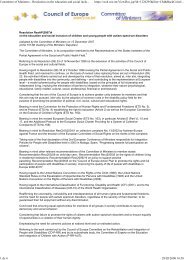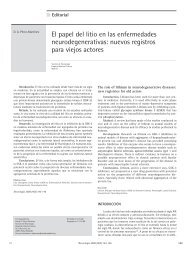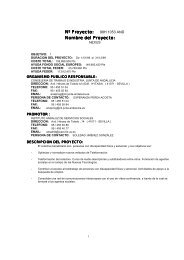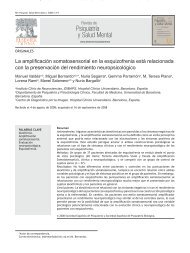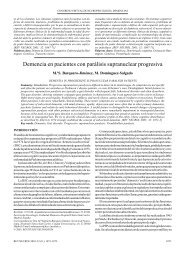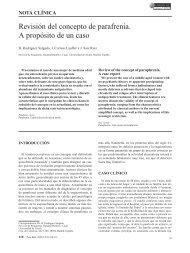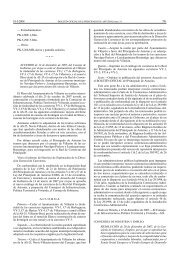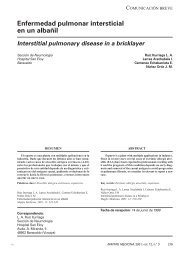Atlas - Servicio de Información sobre Discapacidad
Atlas - Servicio de Información sobre Discapacidad
Atlas - Servicio de Información sobre Discapacidad
You also want an ePaper? Increase the reach of your titles
YUMPU automatically turns print PDFs into web optimized ePapers that Google loves.
appen D ix 2<br />
a) American Association for Mental Retardation (AAMR) classification (2002)<br />
“Mental retardation is a disability characterized by significant limitations both in<br />
intellectual functioning and in adaptive behaviour as expressed in conceptual, social,<br />
and practical adaptive skills. This disability originates before age 18.”<br />
b) Diagnostic and Statistical Manual of Mental Disor<strong>de</strong>rs (DSM-IV) <strong>de</strong>finition<br />
“Significantly sub average general intellectual functioning that is accompanied by<br />
significant limitations in adaptive functioning in at least two of the following skill areas:<br />
communication, self-care, home living, social/interpersonal skills, work, leisure, health,<br />
and safety. The onset must occur before age 18 years.” According to the association,<br />
there are five <strong>de</strong>grees of mental retardation: mild, mo<strong>de</strong>rate, severe, profound, and<br />
severity unspecified.<br />
c) International Statistical Classification of Disease and Related Health Problems (ICD<br />
10)<br />
"Mental retardation is a condition of arrested or incomplete <strong>de</strong>velopment of the mind,<br />
which is especially characterized by impairment of skills manifested during the<br />
<strong>de</strong>velopmental period, skills which contribute to the overall level of intelligence, i.e.<br />
cognitive, language, motor, and social abilities. Degrees of mental retardation are<br />
conventionally estimated by standardized intelligence tests. These measures provi<strong>de</strong> an<br />
approximate indication of the <strong>de</strong>gree of mental retardation [mild mental retardation,<br />
mo<strong>de</strong>rate mental retardation, severe mental retardation, profound mental retardation,<br />
other mental retardation, and unspecified mental retardation].” (WHO, 1993).<br />
d) The International Classification of Functioning, Disability and Health (ICF)<br />
The ICF proposed that the conception of intellectual disability no longer be regar<strong>de</strong>d as<br />
a disease or even the simple physical or psychological consequence of disease, but<br />
rather as a problem of functioning of the whole person. In this mo<strong>de</strong>l, functioning is<br />
consi<strong>de</strong>red as interaction of the person with his environment and is the result of<br />
interactions between a person who is experiencing health problems and environmental<br />
factors. The picture produced by this combination of factors and dimensions is of "the<br />
person in his or her world" (WHO, 2001).<br />
Question 3.1<br />
National policy/programme:<br />
• National policy: An organized set of values, principles, objectives and areas of<br />
action to improve the situation of people with intellectual disability in the country,<br />
the priorities among those goals and the main directions for attaining them.<br />
• National programme: A national plan of action that inclu<strong>de</strong>s the lines of action<br />
required to give effect to a policy. It <strong>de</strong>scribes and organizes actions aimed at the<br />
achievement of the objectives.<br />
Question 3.2<br />
National level: Refers to national or fe<strong>de</strong>ral authorities.<br />
Regional level: Refers to state, <strong>de</strong>partmental authorities or province.<br />
Local level: Refers to municipal authorities.<br />
302 atlas-iD | CompenDium of sourCes useD<br />
2



